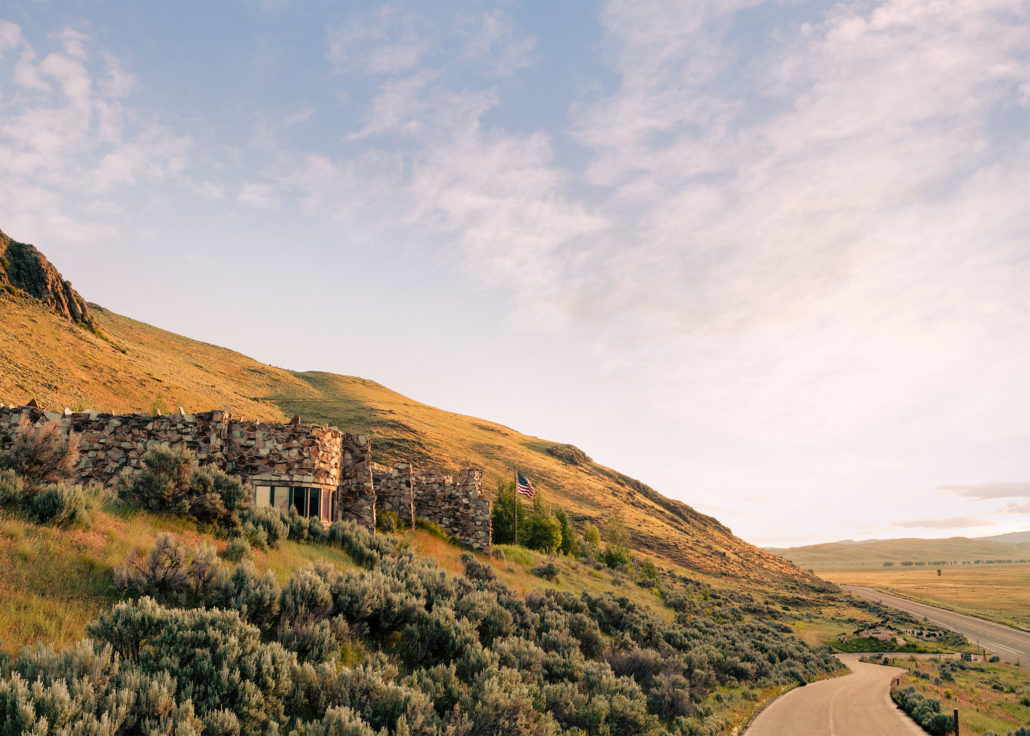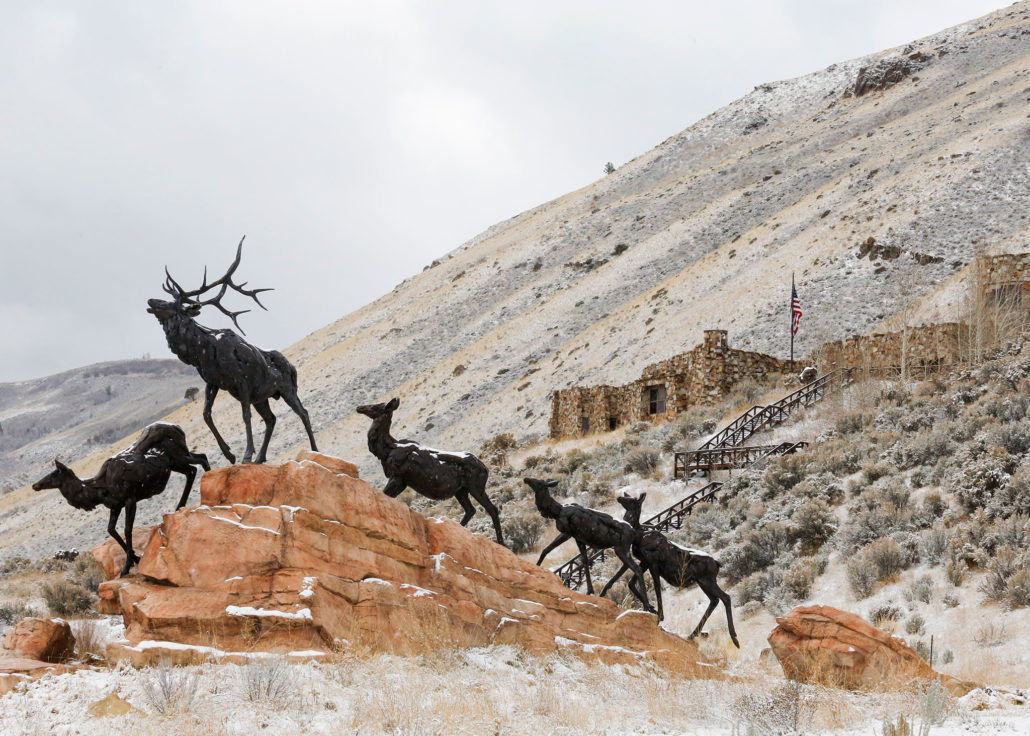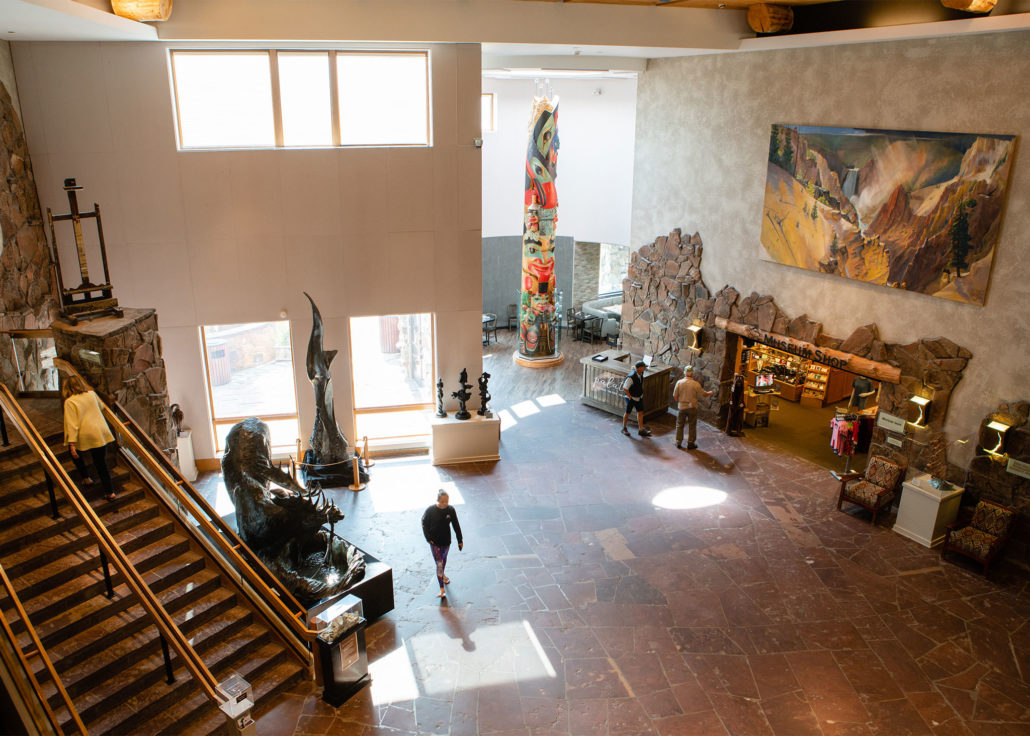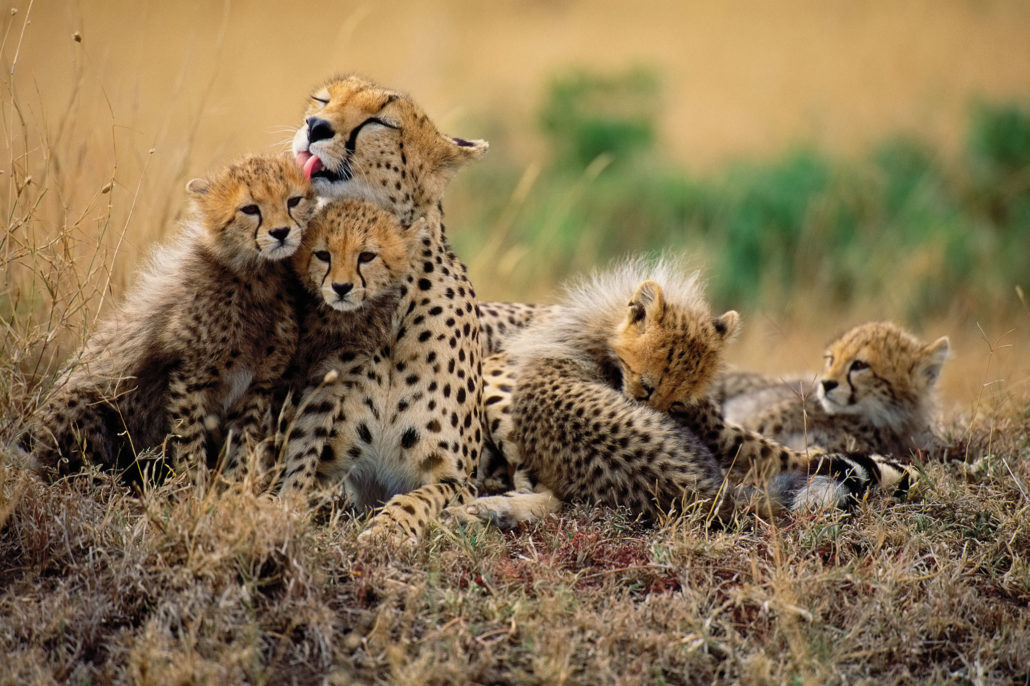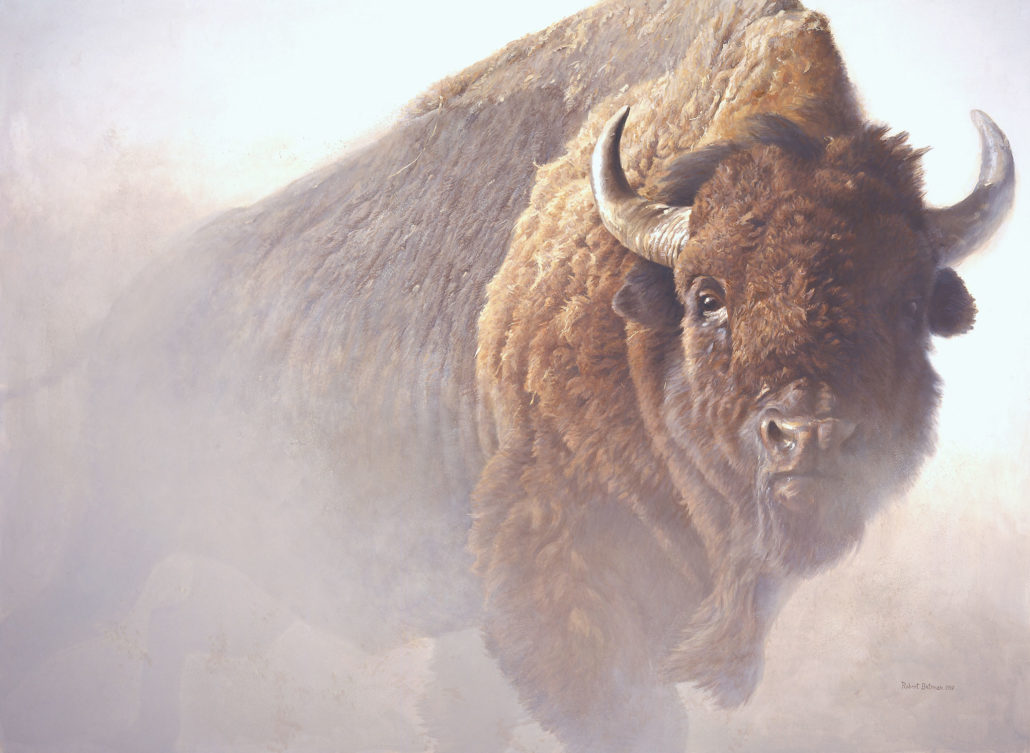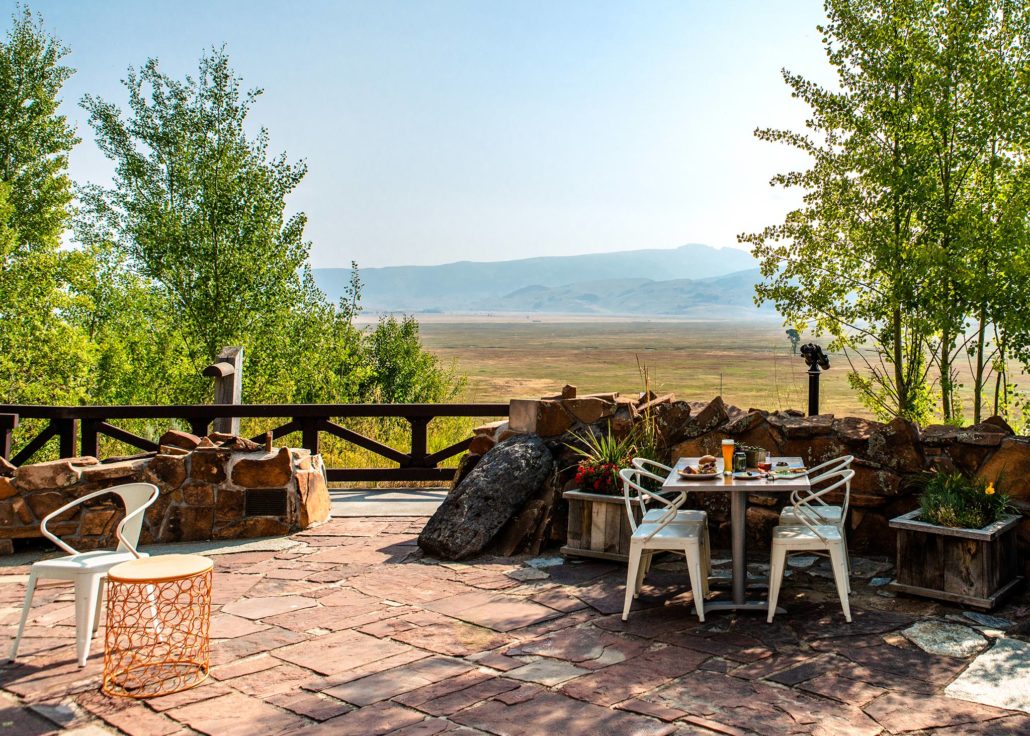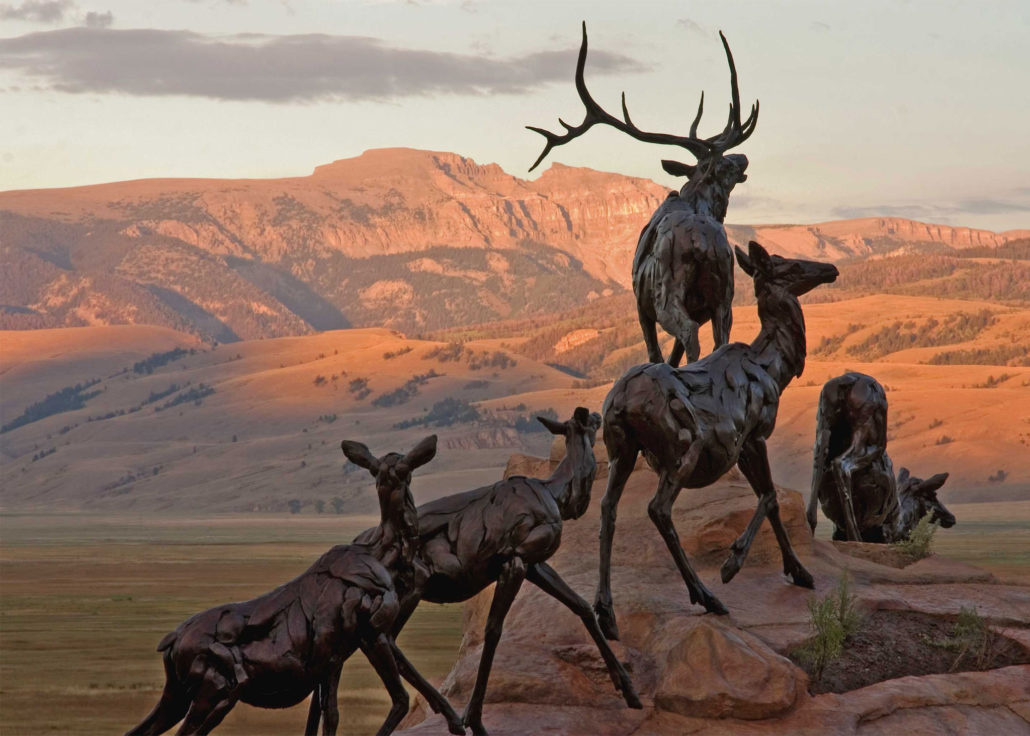Dr. Adam Duncan Harris talks about one of the Valley’s must-see attractions, the National Museum of Wildlife Art, where he is the Joffa Kerr chief curator of art.
The National Museum of Wildlife Art is a 51,000-square foot building inspired by a 16th century Scottish castle. While its Idaho quartzite exterior blends into the hillside on which the museum is perched, it’s not exactly unobtrusive: Opposite the National Elk Refuge two miles north of town, as you drive past its entrance on U.S. highway 191, several sculptures are visible, including one of five life-size elk walking across a giant boulder and, a little higher on the hillside, five adult bison and two calves. (The former is “Wapiti Trail” by sculptor Bart Walter; the latter, which is 64-feet long, is Richard Loffler’s “Buffalo Trail.” Both are part of the museum’s ¾-mile outdoor Sculpture Trail.)
“While many visitors find out about us before they arrive, others see the building as they are driving into town from the airport and say, ‘Hey, that looks like cool place to visit,’” says the museum’s chief curator of art, Dr. Adam Duncan Harris. Those that discover the museum often name it as a highlight of their time in the valley. TripAdvisor reviews are along the lines of: “The architecture, location, and art work in this museum was spectacular. We really enjoyed our visit there.” “Beautiful art in a beautiful setting.” “A hidden gem,” “A must see.” Harris says, “So many people leave here in awe of what a great collection we have and of how enjoyable it was to explore the museum. It gives people an unexpected experience that stays with them for a long time.”
The museum was founded in 1987 as the Wildlife of the American West Art Museum. Located in a 5,000-square-foot rented space on the Town Square, its original permanent collection began with a gift of approximately 250 works of art from local collectors Joffa and Bill Kerr. In 1994, the museum moved to its permanent facility and changed its name. Harris was hired as curator in 2000 and in 2016 he was one of three Wyoming residents to be awarded a Governor’s Arts Award by the Wyoming Arts Council. Harris, a Wyoming native, received his Bachelor’s degree from Brown University, his Masters in American Studies from University of Wyoming and his Ph. D. in Art History from the University of Minnesota. He is the author of Wildlife in American Art: Masterworks from the National Museum of Wildlife Art.
While the museum opened exhibiting traditional wildlife art, today its collection takes a very broad view of the subject. The permanent collection includes approximately 4,900 objects, from circa 2500 B.C. Native American birdstones to work by Carl Rungius, Albert Bierstadt, Georgia O’Keefe, Maynard Dixon, and Andy Warhol. In 2008, Congress voted to recognize the museum as the official “National Museum of Wildlife Art of the United States.” In the last ten years, eight exhibits curated by the museum have gone on to tour other museums across the country.
Recently, photography exhibits have been a pillar upon which the exhibit schedule has been built. A retrospective of the career of Jackson Hole-based nature photographer Thomas D. Mangelsen, “A Life in the Wild,” opened in October and hangs through May. “One of the most often repeated visitor comments is about the breadth and scope of the collection,” Harris says, “but almost every artist in the world has depicted wildlife.”
While Harris says he doesn’t have favorites pieces, museum visitors certainly do. “Chief” by Robert Bateman “can never go away,” Harris says. The painting of a life-size bison staring down the viewer through a cloud of prairie dust “is one of visitors’ favorites.” So is Tucker Smith’s “The Refuge,” an oil painting of a snow-covered National Elk Refuge crowded with elk. The view featured in Tucker’s painting is almost identical to that from the museum itself.
“One of the most powerful things about the museum is that it is directly across the road from the National Elk Refuge,” Harris says. “We are in the middle of the Greater Yellowstone Ecosystem, at the bottom of this amazing wildlife corridor that stretches up to the Yukon. It is such an appropriate place for a museum of this subject to be located. There’s this whole synchronicity between what is happening outside the building, the architecture of the building, and then what is happening inside.” (The museum’s restaurant Palate offers sweeping vistas of the refuge, and a creative lunch menu.)
Because of the museum’s location, visitors regularly report seeing and/or hearing elk, bison, coyotes, fox, and bighorn sheep while walking from the parking lot to the front entrance. “Visiting the museum is rewarding on so many levels; it appeals to people across a broad spectrum of interests including wildlife, nature, and art. ” Harris says. The museum’s mission is to enrich and inspire appreciation and knowledge of humanity’s relationship with nature.

